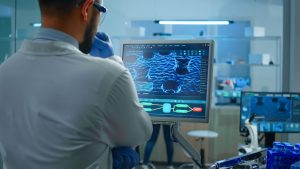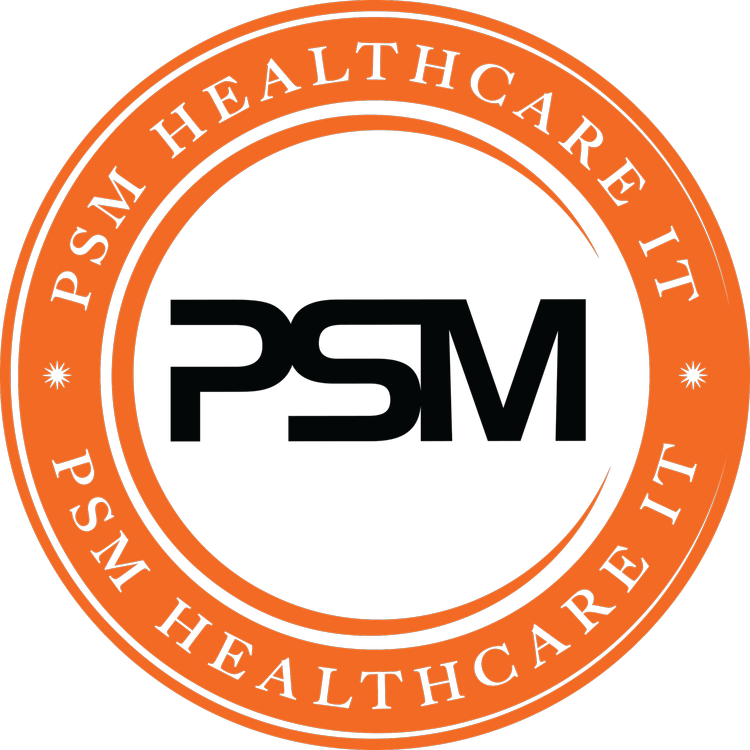In the realm of healthcare, diagnostic imaging IT, including MRI and radiology department data, and IT support play pivotal roles in enhancing patient care, streamlining processes, and improving outcomes. From the advent of X-rays in 1895 to today’s cutting-edge technologies like PACS and DICOM, diagnostic imaging has revolutionized medical diagnostics in the radiology department, helping doctors with patient positioning at the hospital. The seamless integration of IT solutions ensures efficient image management in the radiology department, quick access to critical information for doctors, and precise diagnoses.
Harnessing the power of diagnostic imaging IT not only boosts operational efficiency but also elevates the quality of patient care in the radiology department. This blog post delves into the significance of diagnostic imaging IT and IT support in modern healthcare settings, exploring their evolution, benefits, and impact on clinical decision-making in hospitals and radiology departments.
Key Takeaways
-
Implement Accreditation: Ensure that imaging centers are accredited to guarantee quality and compliance in diagnostic imaging services.
-
Leverage IT Support: Utilize images and data in diagnostic imaging for efficient workflow, improved patient care, and future availability.
-
Embrace Teleradiology Services: Explore the benefits of teleradiology for enhanced diagnostic services and expanded reach.
-
Invest in Radiology IT Solutions: Stay updated with radiology IT solutions to streamline processes and stay competitive in the field.
-
Prioritize Quality and Compliance: Maintain high standards of quality and compliance in diagnostic imaging practices for patient safety and satisfaction.
-
Prepare for the Future: Stay informed about the evolving landscape of diagnostic imaging IT to adapt and thrive in the changing healthcare industry.
Exploring Teleradiology Services
Benefits Overview
Utilizing teleradiology services offers immense advantages such as availability and quick access to expert radiologists for timely diagnosis. Technical customer support plays a crucial role in ensuring seamless diagnostic imaging processes by resolving any IT issues promptly. Fast report turnaround not only enhances client satisfaction but also expedites treatment decisions.
Technical Support
User Assistance
NDI stands out for providing responsive technical support, ensuring smooth operations of teleradiology services. IT specialists at NDI are adept at addressing and overcoming various challenges that may arise during diagnostic imaging processes. Radiologists are readily available for consultations, offering valuable insights and expertise.

Training Programs
Accreditation programs for diagnostic imaging centers in the U.S. are essential for maintaining high standards of quality and patient care. ACR Accreditation holds significant importance in the field of medical imaging, signifying adherence to stringent guidelines and protocols. JRCERT and NAPBC offer accreditation programs that further validate the excellence of diagnostic imaging facilities.
Remote Radiology Solutions
NDI’s remote radiology solutions cater to the evolving needs of healthcare providers by enabling seamless access to radiological expertise from anywhere. PACS (Picture Archiving and Communication System) plays a pivotal role in the teleradiology workflow, allowing efficient storage, retrieval, and distribution of medical images. Reports can be conveniently accessed through PacsStar software, streamlining communication between healthcare professionals.
Accreditation for Imaging Centers
Importance of Accreditation
Accreditation programs play a crucial role in ensuring quality in diagnostic imaging centers. They set standards, guidelines, and best practices that facilities must adhere to for certification. ACR Accreditation stands out as the gold standard in the industry, signifying excellence and commitment to quality care. The program evaluates various aspects such as equipment, staff qualifications, image quality, and safety protocols.
One of the significant benefits of accreditation is the assurance of reliable and accurate results for patients undergoing diagnostic imaging procedures. It instills confidence in both healthcare providers and patients regarding the credibility and proficiency of the imaging center. Moreover, accreditation promotes consistency in service delivery and fosters a culture of continuous improvement within facilities.
U.S. Accreditation Programs
Compliance Processes
In the United States, several accreditation programs oversee compliance processes in diagnostic imaging. The Centers for Medicare & Medicaid Services (CMS) offers accreditation for advanced diagnostic imaging suppliers to ensure adherence to stringent quality standards. These requirements encompass areas such as equipment calibration, radiation safety measures, and staff training protocols.
The Joint Review Committee on Education in Radiologic Technology (JRCERT) plays a vital role in accrediting educational programs related to radiography. By setting educational standards and evaluating curriculum effectiveness, JRCERT ensures that future radiologic technologists receive comprehensive training to deliver high-quality patient care.
Quality Assurance
Quality assurance mechanisms are pivotal in maintaining optimal standards within diagnostic imaging centers. The American College of Radiology (ACR) plays a central role in accrediting facilities across various imaging modalities like MRI, CT scans, and mammography. Through rigorous evaluations and performance assessments, ACR ensures that facilities meet or exceed industry benchmarks for image quality, safety protocols, and patient care.
Continuous quality improvement initiatives form an integral part of accreditation programs to drive ongoing enhancements in service delivery. By analyzing data trends, identifying areas for improvement, and implementing corrective actions, imaging centers can elevate their operational efficiency and enhance patient outcomes.
Diagnostic Imaging Services
Service Overview
National Diagnostic Imaging (NDI) offers a range of diagnostic imaging services, utilizing advanced technology for accurate results. Clients benefit from streamlined processes, ensuring a hassle-free experience during their visits. NDI prioritizes proactive communication with referring physicians to guarantee seamless coordination and prompt delivery of reports.
Healthcare Facility Benefits
Efficiency Improvement
-
Diagnostic imaging centers play a crucial role in enhancing efficiency within healthcare facilities by providing quick and precise diagnoses.
-
The adoption of the latest teleradiology technology enables centers to streamline workflow, reducing waiting times for patients.
-
NDI’s commitment to utilizing cutting-edge technology ensures rapid report turnaround times, optimizing operational efficiency for both the facility and patients.
Patient Care Enhancement
-
Diagnostic imaging significantly contributes to improving patient care by facilitating early detection and treatment of various medical conditions.
-
Quick access to reports is vital for referring physicians to make informed decisions promptly, leading to better patient outcomes.
-
The National Accreditation Program for Breast Centers (NAPBC) offers resources and guidelines to ensure that breast centers maintain high standards of care and quality services.
IT Support in Diagnostic Imaging
Customer Care Commitment
NDI is dedicated to providing exceptional customer care in the realm of diagnostic imaging. Clients benefit from 24/7/365 responsive technical support, ensuring their needs are met promptly. IT specialists play a crucial role in addressing technology-related queries and offering guidance to optimize system performance.
Clients can rely on NDI’s IT support team for swift resolutions to any technology-related issues they encounter. Whether it’s troubleshooting software glitches or ensuring seamless integration of new imaging modalities like MRI or mammography, the experts are there every step of the way. The commitment to customer care extends beyond regular business hours, providing peace of mind to healthcare facilities.
Features of IT Support
Platform Features
-
The PACS system tailored for teleradiology workflow streamlines image management and interpretation processes efficiently.
-
With PacsStar software, accessing reports becomes hassle-free, enhancing workflow productivity and patient care.
-
Referring physicians benefit from a dedicated portal that grants them easy access to patients’ reports for timely decision-making.
Product Usage Support
NDI’s comprehensive approach includes offering technical customer support for product usage. Clients can leverage this assistance to maximize the potential of their diagnostic imaging equipment. The IT specialists at NDI are well-equipped to provide guidance on optimizing the performance of various imaging modalities such as nuclear medicine and bone density scans.
For clients seeking assistance with product utilization, NDI’s IT support team stands ready to address any concerns promptly. From troubleshooting hardware malfunctions to guiding users on navigating software interfaces, the team ensures a seamless experience for healthcare providers. Contact details for technology customer support are readily available, guaranteeing quick access to expert assistance when needed.
Radiology IT Solutions
Overview of Solutions Offered
NDI offers a range of diagnostic imaging solutions to enhance patient care and streamline processes. Radiologists are readily available for consultations, ensuring accurate interpretations and timely reports. Accreditation programs by ACR and JRCERT uphold quality standards in the radiology department.
-
NDI provides cutting-edge diagnostic imaging solutions for precise diagnosis.
-
Radiologists play a crucial role in offering expert consultations for complex cases.
-
ACR and JRCERT accreditation programs validate the excellence of services in the radiology department.
Integration with Healthcare Systems
The integration of diagnostic imaging with healthcare systems revolutionizes patient care delivery. Leveraging teleradiology technology offers seamless connectivity between facilities, enhancing collaboration and efficiency. Picture Archiving and Communication System (PACS) plays a vital role in organizing and distributing medical images efficiently.
-
Diagnostic imaging seamlessly integrates with healthcare systems, improving patient outcomes.
-
Teleradiology technology facilitates real-time image sharing among healthcare professionals.
-
PACS optimizes the storage, retrieval, and distribution of medical images across departments.
Ensuring Quality and Compliance
Role of Accreditation
Accreditation plays a vital role in upholding quality standards within diagnostic imaging IT and IT support. It ensures that facilities adhere to rigorous guidelines set forth by regulatory bodies. The American College of Radiology (ACR), Joint Review Committee on Education in Radiologic Technology (JRCERT), and National Accreditation Program for Breast Centers (NAPBC) offer accreditation programs. These programs certify that facilities meet the necessary standards for providing high-quality care.
-
ACR accreditation focuses on ensuring compliance with specific technical standards and guidelines.
-
JRCERT accreditation evaluates educational programs to guarantee quality training for radiologic technologists.
-
NAPBC accreditation emphasizes the importance of comprehensive breast care services.
Continuous Quality Improvement
Facilities engage in various initiatives to continuously improve the quality of their diagnostic imaging services. Through regular assessments and feedback mechanisms, they identify areas for enhancement. Participating in ACR accreditation programs aids in maintaining high levels of quality assurance.
-
ACR accreditation fosters a culture of excellence by promoting best practices in patient care.
-
Facilities benefit from improved operational efficiency and enhanced patient outcomes through participation in accreditation programs.
Benefits of Teleradiology
Accessibility and Convenience
Diagnostic imaging services enhance accessibility by allowing remote access to reports and images, enabling healthcare providers to review them from anywhere. This capability is particularly beneficial for rural areas lacking specialized medical facilities.
Reports can be conveniently accessed through the PacsStar software program, which streamlines the process of viewing and analyzing radiology images. This software ensures quick retrieval of crucial information, aiding in prompt diagnosis and treatment decisions.
NAPBC provides valuable resources for breast centers, ensuring they have access to comprehensive support for delivering high-quality care. By leveraging these resources, healthcare professionals can optimize their services for better patient outcomes.
Cost-Effectiveness for Centers
Utilizing diagnostic imaging services offers significant cost-effectiveness benefits for healthcare centers. The fast turnaround time for reports reduces delays in diagnosis and treatment, leading to improved operational efficiency.
The efficiency improvements brought about by diagnostic imaging services contribute to overall cost savings for healthcare centers. By streamlining processes and enhancing accuracy in diagnostics, these services help minimize unnecessary procedures and expenses.
Incorporating teleradiology into medical practices not only improves patient care but also enhances the financial viability of healthcare facilities. The strategic utilization of advanced technologies results in optimized resource allocation and streamlined operations.
Enhancing Diagnostic Services
Leveraging Technology
Diagnostic imaging centers utilize advanced technology for improved outcomes. The latest teleradiology technology enhances remote image interpretation. Platform features streamline diagnostic imaging processes, ensuring efficiency and accuracy.
-
Pros:
-
Improved accuracy in diagnoses
-
Enhanced collaboration among healthcare professionals
-
Faster turnaround times for results
-
Training and Development
Opportunities abound for training in diagnostic imaging. The Joint Review Committee on Education in Radiologic Technology (JRCERT) plays a crucial role in accrediting educational programs. The American College of Veterinary Radiology (ACVR) provides resources for certification in veterinary imaging.
-
-
Access to specialized knowledge
-
Career advancement opportunities
-
Ensures adherence to industry standards
-
-
-
Complete required education and training
-
Pass certification exams
-
Maintain certification through continuing education
-
Future of Diagnostic Imaging IT
Technological Advancements
Technological advancements in diagnostic imaging are shaping the future of healthcare. Cutting-edge technology like Artificial Intelligence (AI) and Machine Learning (ML) is revolutionizing how medical images are interpreted. NDI, or Next-Generation Diagnostic Imaging, is at the forefront of utilizing these advancements for teleradiology services. This allows radiologists to interpret images remotely, leading to quicker diagnoses and improved patient outcomes.
NDI’s use of advanced technology enables faster image processing, reducing turnaround times for reports. The integration of AI algorithms assists radiologists in detecting subtle abnormalities that might be missed otherwise. These advancements not only enhance diagnostic accuracy but also streamline workflow efficiency in healthcare settings.
Embracing technology in diagnostic imaging translates to enhanced patient care. With faster and more accurate diagnoses, patients receive timely treatment, improving their overall health outcomes. Moreover, the seamless integration of technology ensures that healthcare providers can deliver personalized care tailored to each patient’s unique needs.
Trends in Healthcare IT
The current trends in healthcare IT are driving significant improvements in diagnostic imaging practices. Advancements such as Picture Archiving and Communication Systems (PACS) have transformed how medical images are stored and accessed digitally. PACS streamlines the process of storing, retrieving, and distributing images across healthcare facilities, enhancing collaboration among medical professionals.
IT support plays a crucial role in optimizing diagnostic imaging processes by ensuring data security and interoperability between different systems. The integration of Electronic Health Records (EHRs) with imaging systems allows for comprehensive patient information access, leading to more informed decision-making by healthcare providers.
As technology trends continue to evolve, the impact on patient care becomes increasingly profound. Patients benefit from faster diagnoses, reduced wait times for results, and improved treatment planning due to technological innovations in diagnostic imaging IT. The efficiency gained through these trends enhances overall healthcare delivery, making services more accessible and effective for patients worldwide.
Closing Thoughts
You’ve delved into the realm of diagnostic imaging and IT support, understanding the critical role they play in healthcare. From exploring teleradiology services to ensuring quality and compliance, you’ve seen how technology enhances diagnostic capabilities. Accreditation, radiology IT solutions, and the future of diagnostic imaging IT have all been part of your journey towards optimizing patient care.
As you navigate this evolving landscape, remember to leverage IT solutions to streamline processes and improve patient outcomes. Stay informed about the latest advancements in diagnostic imaging technology to provide top-notch care. Embrace innovation and continue learning to stay at the forefront of this dynamic field.
Frequently Asked Questions
What is the role of IT support in diagnostic imaging?
IT support in diagnostic imaging ensures seamless operation of software and hardware systems, troubleshoots technical issues promptly, and safeguards patient data privacy through robust cybersecurity measures.
How can teleradiology services benefit healthcare providers?
Teleradiology services enable healthcare providers to access radiology expertise remotely, expedite the diagnosis process, reduce turnaround times for reports, enhance patient care coordination, and improve overall efficiency.
Why is accreditation important for imaging centers?
Accreditation for imaging centers signifies compliance with industry standards, ensures quality assurance in diagnostic procedures, enhances patient trust in the facility’s services, and demonstrates a commitment to continuous improvement in healthcare delivery.
What are some key features of radiology IT solutions?
Radiology IT solutions offer advanced image management capabilities, seamless integration with Electronic Health Records (EHR) systems, efficient workflow automation tools, secure data storage options, and customizable reporting functionalities to streamline diagnostic processes.
How does diagnostic imaging IT contribute to ensuring quality and compliance?
Diagnostic imaging IT facilitates adherence to regulatory requirements by maintaining accurate records of imaging studies, supporting standardized protocols for image acquisition and interpretation, enabling audit trails for quality control purposes, and promoting interoperability among healthcare systems.





